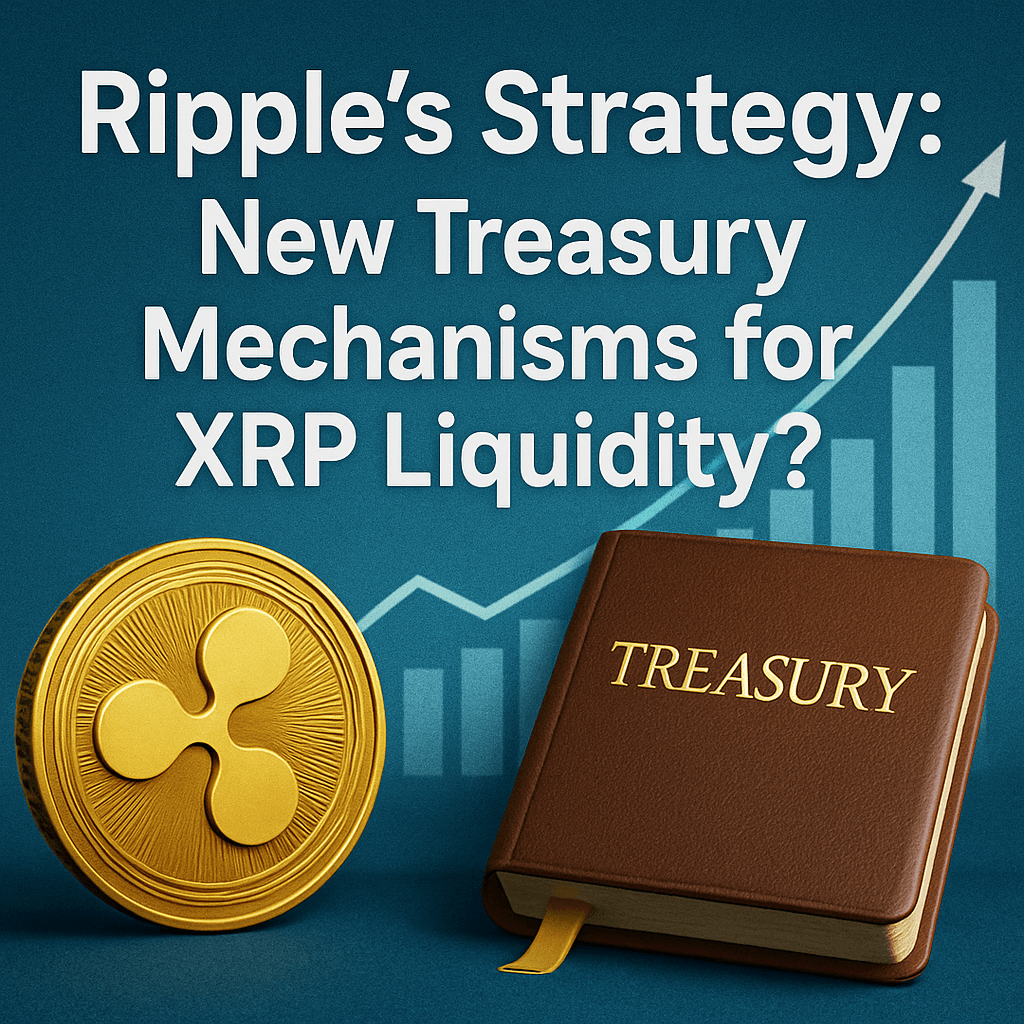Ripple’s Strategy: New Treasury Mechanisms for XRP Liquidity?

The ongoing controversy surrounding Ripple Labs and its cryptocurrency XRP has recently found new life due to claims made by crypto analyst and researcher known as “Darkhorse.” These assertions have sparked renewed discussions about Ripple’s potential circumvention of a federal court injunction through a newly created $300 million XRP treasury partnership with Webus International Ltd.
The New Treasury Setup
On June 4, 2023, Darkhorse shared insights about this treasury vehicle via a post on X (formerly known as Twitter), arguing that Ripple is strategically positioned to navigate legal challenges in a compliant manner. “This new treasury setup allows @Ripple to bypass the injunction legally and cleanly,” he claimed, suggesting that the company’s recent restructuring utilizes an institutional framework to leverage regulated intermediaries, moving away from direct sales to institutional investors.
How the Treasury Works
The framework, as delineated in a Form 6-K filing by Webus, indicates that an SEC-registered investment adviser, Samara Alpha, will oversee the treasury. This arrangement grants Samara full control of up to $300 million worth of XRP, which can be gradually released under a phased, regulated structure designed to adhere to SEC guidelines.
- **Regulated Intermediaries**: The critical aspect of this setup lies in the use of regulatory intermediaries to facilitate transactions without the direct involvement of Ripple, thereby avoiding contraventions of the noted injunction.
- **Phased Deployment**: The structured approach allows Ripple to monitor and manage liquidity flows while adhering to compliance measures.
While the Form 6-K filing does not explicitly define the source of the XRP, Darkhorse interprets the intent of the structure as one that permits Ripple to sell XRP to institutional intermediaries like Samara. The subsequent allocation to clients such as Webus would occur without contravening the existing court order.
Ripple’s Legal Constraints and Strategic Adjustment
Ripple’s entanglement with legal restrictions stems from a 2024 permanent injunction issued by Judge Torres, which mandates that Ripple must refrain from direct institutional sales of XRP unless these are formally registered with the SEC. Darkhorse asserts that the new treasury mechanism creates a compliant escape route, stating, “The workaround? Sell to regulated intermediaries with treasury agreements that are SEC-transparent and non-retail facing. It’s structured—not casual.”
Controversy Among Crypto Experts
This assertion has drawn contention from veteran XRP commentator, Jay Nisbett, who challenges Darkhorse’s interpretation. Nisbett argues that the connection between Ripple and Webus is not one of direct partnership but of market activity. According to him, “Webus is simply acquiring XRP like any other participant on the secondary market,” and he cites a determination that XRP is not a security in this context, promoting a more straightforward view aligned with market maturation.
Darkhorse’s Four-Part Argument
- **Intent and Structure**: Darkhorse highlights that Webus’s local filing indicates more than intent; it suggests a structured financial mechanism rather than just market acquisition.
- **Institutional Challenges**: He notes the distinct challenge for Ripple regarding direct institutional sales, which necessitates the use of intermediaries to remain compliant.
- **Established Connections**: Darkhorse points to historical ties between Ripple’s network and Webus, asserting that operational integration exists beyond surface-level observations.
- **Legal and Regulatory Consideration**: He emphasizes the nuance of XRP holdings, arguing that merely storing XRP does not exempt entities from regulatory scrutiny; managing the asset under an SEC-registered environment signifies awareness of legal responsibilities.
Wider Implications for Cryptocurrency Regulation
The debate over Ripple’s treasury vehicle illustrates a broader tension within the cryptocurrency sector regarding regulatory compliance and innovation. Several cryptocurrency exchanges and companies are re-evaluating their business models to align with evolving regulations while attempting to capitalize on market demand.
The SEC’s relative silence following these developments may indicate an ongoing evaluation of such structures, serving as a potential harbinger for how future cryptocurrency operations can legally navigate regulatory frameworks.
Current Market Position of XRP
As of the latest market assessment, XRP has seen fluctuations, trading at approximately $2.1989 at the time of publication. Market analysts continue to monitor the asset’s dynamics, especially as Ripple maneuvers through regulatory challenges while seeking institutional involvement in an ever-evolving landscape.
This financial dance encapsulates the complexities of integrating traditional financial regulations with emerging digital assets, marking an essential chapter in the ongoing narrative of cryptocurrencies.